- Abstract
Written amid multiple monumental social and political movements, this paper attempts to answer the tricky question “What is our role as environmentalists”, particularly when the future of the world seems uncertain. Through a lens of existential inquiry, I begin by highlighting the dominant discourse surrounding Western environmental imaginaries, as well as further discussions around settler discourse in these imaginaries. I suggest that a focus must be held on a shared relationship with the land, this relationship being elevated above other de facto intersectional identities, as a unifying intersectional layer in broader local discourse.
I then investigate how this has been applied in the broader discussion around the environment in various art forms including re-naturalization work by novelist Jack Kerouac and the broader Beats generation, as well as depictions of the Gaia hypothesis. To suggest practical applications of this inquiry, I investigate how these findings relate previous eco-political conflicts including seal hunting in Canada’s North and The Berger Inquiry. I suggest that the role of environmentalists consists of reaffirming an obligation outside of anthropocentric identities; working to situate the human experience as inherently natural and interlinked with the natural world.
Page Break
- Introduction
In the eyes of many, the caricature of ‘we’ ‘environmentalists’ can be more closely related to hippies chaining themselves to trees and protesters blocking off intersections more than much else. Consequently, the question of whether “‘environmentalists’ should work towards protecting nature” would illicit a seemingly obvious response, after all, it is at the center of many of our goals. However, the term ‘nature’ is inherently culturally specific; what it means to protect ‘nature’ for one group may mean something entirely different for another. As it stands, we live in a world divided, fissured on grounds of allegiance to identity, many of such identities existing at odds with environmental cohesion. The very crux of the existential struggle of climate change remains rooted in a constant battle to identify what it truly means to be human, independent of identity, and increasingly, what matters at all. Therefore, the task we face as ‘environmentalists’ is to reaffirm an obligation outside of anthropocentric identities; working to situate the human experience as inherently natural and interlinked with the natural world.
- What Is Nature
- William Cronon
The term nature conjures up unique imaginaries for each individual and broadly within groups. In the context of dominant western culture, nature has traditionally been viewed as an entity separate from society. This was elucidated more poignantly through William Cronon’s Trouble with Wilderness. He brought to question the existence of a dichotomy between society and nature, alleging that, particularly among white middle-class communities, wilderness was supported as an escape from the struggles of the city (Cronon, 1996). While the origins of these imaginaries are complicated, (some pointing to Judaeo-Christian, frontier, capitalist, and colonial attitudes), the result is the privileging of an idealized, human devoid sense of nature (Collard & Dempsey, 2018). This was most clearly seen projected in public policy through John Muir’s philosophies of conservation and national parks in the late 1800s which portrayed humans as separate from the natural world (Lukes, 2016).
While many see national parks as an effective form of conservation, protecting this idea of nature can bring with it potentially oppressive results. Many national parks throughout North America forcibly evicted Indigenous inhabitants to fortify this idea of ‘Nature’. To add insult to injury, many of these parks fell short of meeting conservation goals (Stevens, 2014). Ultimately, this urge to protect this understanding of nature led to, and justified, dispossession of land from marginalized Indigenous communities. All of this came as the result of an idea that nature ought to be protected and shielded from the naturality of humans.
- Dian Million
Dian Million furthers this conversation by arguing in her piece We are the land, and the land is us that settler discourse divides land into colonial-capitalist ideas of urban and rural (2018). She claims that in current rhetoric, the land is depicted as split between an educated and multicultural urban core and uneducated-whites in rural geographies, particularly in the United States. She decries this ‘oversimplification’, claiming it erases indigenous epistemologies present on the land since time in memory. She claims they are replaced by oppressive dominant ideas of nature (Nishime & Hester Williams, 2018). To address this erasure of indigenous identity, some would argue that ‘environmentalists’ should elevate and work exclusively off indigenous epistemologies of the land, particularly in discussions surrounding nature; indeed, engaging traditional knowledge systems does have the potential to broaden the academic discourse and diversity of thought surrounding environmental imaginaries (Pelai, Hagerman, & Kozak, 2021). That considered, privileging a single group’s ideologies, and situating this group as a discrete entity above the rest, brings with it its own obvious challenges.
Despite Million’s claim that she seeks “to acknowledge our relations as we come together, in this collection, rather than to just identify differences” (p. 20)(2018), she still situates the experience and imaginaries of rural whites as hegemonic, inadvertently perpetuating a sense of othering and ignoring their own intersectionality. This acts to limit the possible cultural variation in the stream of ecological views before and after settlement.
- Cronon, Million Grouping
Both Cronon and Million’s essays seek to make distinctions based on identities, particularly surrounding race, while mitigating the potential place-based influences that may also impact a relationship with nature. Though it is perhaps simpler to address trends among racial groups, the challenge that remains is an overly simplified and potentially harmful view of environmental imaginaries which reduce place-based influences on their development.
A considerable amount of learning can come through implicit teachings from the land, and arguably, with time, these teachings have shifted settler relationships with the land (urban and rural) and this has occurred regardless of racial grouping (Riney-Kehrberg, 2016). For example, hunting, fishing, agriculture, mining and other land-based practices are important cultural components among many in rural America, and invariably shape understandings of their relationships to the natural world (Riney-Kehrberg, 2016).
The ability to engage with nonhuman antagonism and bond overreactions to these challenges is important, and something which likely shapes a group’s ideal of nature beyond broad racial relations to the land (Riney-Kehrberg, 2016). The challenge may be more rooted in how these imaginaries and relationships are translated into political discourse, rather than a lack of these relationships to begin with. Therefore, the focus of ‘environmentalists’ ought to remain centered on local discourse and how individual relationships with the land translate into a larger mosaic of collective environmental imaginaries, rather than imaginaries and narratives which are linked exclusively to singular identities and difference.
Despite intentions for otherwise, Million presents an ‘us vs them’ dichotomy and fails to temporally recognize the impact of place on all communities. Of course, imaginaries of what nature ‘is’ clearly vary among individuals and within groups. This considered, it is important to consider “the land as first teacher” in conjunction with societal structures and intersectional discourse (Riney-Kehrberg, 2016; Styres, 2012). Therefore, reminding humans of the land as a teacher, and allowing for effective storing of these memories and relationships as lessons could be highly beneficial, regardless of identity. Then translating these understandings to converse about options for working with the land is significant.
Some may argue that this is a proposed erasure of indigenous identity, however, the collections of stories regarding many indigenous relationships with the land are often extremely rich and intrinsically engrained in many indigenous stories, languages, and cultures (Nishime & Hester Williams, 2018; Styres, 2012). Theoretically, these place-based relationships, due to their meticulous integration with the local setting, have highly specific connections with the natural world, which would undoubtedly align with similar observations by settlers through open and collaborative discourse (Leech, 2019; Taylor, 2016). To facilitate dialogue and encourage settler participation in these discussions, the limiting of difference/othering and amplification of shared stories and experiences with the land is critical. Fundamentally, these approaches are perhaps more aligned with ideological decolonization than the imposition of imaginaries on these groups.
- Identity
As it stands, identity maintains a strong foothold in conversations surrounding climate change and among ‘environmentalists’. The challenge is that these identities often divide, rather than garner effective results. This can be seen in the burgeoning nationalism related to climate goals, rooted in identity and the proliferation of the other (Conversi, 2020; Podoba, 1998; Vedi & Vedi, 2001). In the American Midwest, white nationalism stokes a nostalgia of imaginaries of an ethno-state flourishing with the pollutant industry of the past. (Conversi, 2020) Even the use of cars or trucks can be seen as connected to identity or political decision. In many cases, it appears to these communities that there exists despite pleas from ‘the other’ to focus on environmental components (Barber, L. B., 2019).
These imaginaries are supported on media outlets, in the physical environment, and through online channels (Conversi, 2020). All settings entrench identity-based politics, only expedited by the proliferation of social media tribalism (Hayes & Knox-Hayes, 2014; Robards, 2018; Ross, 2018). The challenge is an amplification of difference which could inadvertently politicize environmental relationships. The possible result is a barrier of allowing people to identify as an environmentalist, largely due to their understanding of what the identity of an environmentalist means, rather than a deficit of the relationships with the natural world in itself. This seems to only be amplified by intense polarization and identity politics, as well as an apparent dissociation from our shared speciation.
The term ‘environmentalist’ is largely (albeit anecdotally) associated with caricatures of ‘liberals’ and thus identity. Eco-consumerism ironically even feeds off this identity as a fad. And yet what it truly means to be an environmentalist is pushed to the side in favour of conveying a particular identity. For many, particularly self-identified conservatives, ‘‘environmentalists’’ are The Other, which further stifles conversations about environmentalism, since, to be an environmentalist, would mean adopting a liberal policy at odds with their own identity.
There are many explanations as to why this might be the case. For example, Benjamin Barber might argue that this dichotomy is a struggle between globalization and traditional values, liberal values being conflated with globalist pressure, particularly against those benefiting from the market (1992). It is possible that the development of environmental imaginaries, particularly related to political discourse, further entrenches environmentalism as a threat to their identity as opposed to a unifying and human obligation.
The root of this could be, as Barber notes, reactionary protection of culture, which in this context appears to be at odds with the protection of nature (Unless of course nature can be used to justify these nationalist tendencies) (Gardiner, 2020). The challenge, therefore, is that those standing in the way of environmental action politically, are doing so because of a stoking of their identity.
Furthermore, an overarching challenge of claiming that ‘environmentalists’ should protect nature, is the creation of a rhetorical war. To protect implies that nature is under attack by The Other. Whether the other be capitalists or communists, white nationalists or immigrants, to project a need for protection inherently spurs the creation of an Other who is harming it (Gardiner, 2020; Mihaylov & Perkins, 2015; Noor, 2019; Savoulian, 2019). Depending on who is portrayed as The Other, the urge to protect can inadvertently create intense hostility which may further entrench anger directed towards climate action.
Whether it be France’s Yellow Vest Movement or North America’s terse climate denialism it could be argued that many of these protests come as the result of threats against identity and against a miscategorized Other (Barber, B. R., 1992; Conversi, 2020). To fundamentally counter these trends, strongly held identities must be mitigated (at least in public discourse) in favour of identities of shared humanity and connection with the natural world. It would be prudent for environmentalism to be detached from identity and be presented as a natural and fundamental relationship we all share with the land. With that, the natural world may relate to something worth privileging over other strongly held values such as capital accumulation or identity. Undoubtedly, the goal of ‘environmentalists’ must be to constantly remind their respective societies of an obligation to the natural world independent of identity and facilitate those conversations.
- The Significance
In a practical sense, the previously mentioned distinction would entail a shift from a role of imposer of environmental imaginaries “‘environmentalists’ should protect nature”, to the role of a facilitator and mediator “‘environmentalists’ should facilitate discussion of what environment means, reaffirm the land as a unifying force, and mediate these understandings to guide industry to preserve and strengthening these relationships”. This has been seen throughout grassroots activism for environmental objectives, particularly concerning Deep Ecologies and environmental justice (Mihaylov & Perkins, 2015) Of course, ecologies are inherently political, so the role of an environmentalist must be to embrace the diversity of environmental imaginaries and further embrace growth and diversity of thought. Not all rural communities are monolithic entities, therefore attempting to understand the histories of ecological relationships, as well as facilitating a diversity of thought is critical in local activism and mediation. (Mihaylov & Perkins, 2015) It is our job as environmentalists to understand these histories, and the people in a community to attempt to understand and develop local environmental imaginaries and assist in the making of decisions because of these understandings.
It is critical to use the land itself as a baseline, acting as another layer of unifying discourse independent of exclusive group identity. It has been said that the “environment provides the natural boundaries and material exo-structure for community relationships”(p. 130) as a result, anchoring to these exo-structures is critical in environmental mediation (Mihaylov & Perkins, 2015) We environmentalists must inspire curious investigation of nature relations within a society, preventing identity linked polarization and combative defensiveness of what nature truly means, or what it ought to mean, and instead facilitate conversation and, hopefully, community action built off these baselines.
- Applications in Art
Multiple attempts have been made to reduce ideas of a society-nature divide in dominant North American culture, as well as reduce the tendency to stoke difference. James Lovelock is widely known for his Gaia hypothesis, which situates the earth and all its components, including humans, as a holistic and self-regulating system (Lovelock, 2003; Mohammad, 2017). As much as we as a western society may attempt to sanitize our existence through processes of metabolic rift, there is inescapable naturality to who we as a species are. Though some have heavily critiqued or debunked the theory, the overarching vision is a call for society to work together to interact with the regulating of the global climate. Lovelock implicitly builds on this idea of reducing individual identities while portraying a much broader approach to planetary relations. This philosophy places humans as a small puzzle in an overarching natural system and reminds us of our minuscule existence and overarching human unity which has the potential to be employed to re-evaluate our relationship with the planet and each other.
In literature, Jack Kerouac’s book “the Darhma Bums” also conveys a larger need to reconcile with identity and tribal impulse, however, this reconciliation is more introspective than Lovelock’s portrayal (Kerouac, 2006). Kerouac espouses a philosophy inspired by eastern religion, predicated on the idea that, with enough mindfulness and meditation, one can simply exist and connect with the natural world. The result was a novel with brings to question the value of consumerism and human-nature separation, both in the physical sense and mental state of nature.
Interestingly, Kerouac mentions quite frequently the naturality of sexual pleasure, in contestation to puritan American values, and fundamental to many of the Beats’ writing. By doing so, Kerouac builds off the work of Foucault, viewing sexuality akin to hunger or other human needs, and further points to a need to reengage with our natural selves rather than repress our existence. Though seemingly unrelated, this notation calls on a deconstruction of human features we deem unnatural; It highlights the unifying force of the human experience and the naturality of this experience (as well as the histories of attempted suppression), which remains a significant consideration when viewing the western societal-nature divide.
Ultimately, this divide attempts to sanitize our existence as animals. The role of environmentalists must be to reduce these larger societal rifts built on identity which act to do the same. Kerouac, and many other artists in the Beats generation, prime a need to re-establish bodily autonomy and naturality over imposed state structures and ideologies, something which is critical in the conversation around personal relationships to nature (Kerouac, 2006; Taylor, 2016). To work off individual understandings of nature and reinstate a symbiosis with the natural world would be an ideal goal of environmentalists, as challenging as this may be.
- Where ‘‘environmentalists’’ Fell Short
Though this may occur in a collection of essays and art, the challenge is that hegemonic ideas of nature persist, even in ENGOs. Angry Inuk, directed by Alethea Arnaquq-Baril, speaks intensely about Greenpeace’s inaccurate portrayal of seal hunting as violent and savage. This resulted in the economic crash of the market for seal trade and subsequent decimation of many Inuit livelihoods. Consequently, a rash of community suicides ripped through Northern Canada, occurring at the hands of so called ‘environmentalists’ (Unikkaat Studios Inc, NFB Campus Collection, & National Film Board of Canada, 2016). Greenpeace effectively portrayed seal hunting as an a-political and morally reprehensible act, despite seals not being endangered and their presence as a key food source and economic driver of many Inuit communities. But seals are cute and animated, which made them an easy poster child for protection.
The amplification of the identity of an ‘environmentalist’ may have enforced this elitism within Greenpeace, that ‘protecting’ seals could do no wrong. This environmentalism for aesthetic furthered a type of conservation decoupled from local understandings of the land, and a perpetuation of The Other. All of this was wrapped in the illusion of a black and white decision. The top-down approach, lack of consultation and lack of open dialogue resulted in another ‘us vs them’. The power imbalances inherent to large ENGOs stripped the communities of their agency and pushed a devastating narrative. There was no effort placed on attempting to understand how the individuals in these communities viewed their relationship to the land, and as a result, Inuit communities paid the price with institutional and globalized oppression resulting from hegemonic views of nature.
- Where ‘‘environmentalists’’ Succeeded
The Berger Inquiry was an Environmental Impact Assessment for the Mackenzie Valley ordered in 1974 by Jean Chretien, Canada’s then Minister of Indian Affairs and Northern Development. (First Nations Studies Program, 2009) The process did far more than simply protect nature, but rather brought an intricate review into the existing relations with the land. The report saw consultation with over 30 First Nations and Inuit communities and was broadcasted in 6 different languages (First Nations Studies Program, 2009; Goudge, 2016) The result was a process that attempted to understand environmental imaginaries through an intersectional and land-based approach. The report’s legacy was a collective northern voice that amplified grassroots and local relations to the land (Goudge, 2016). The report also made environmental imaginaries a conversation, which prevented hegemonic generalizations of what the communities might want, instead they intimately investigated what they did want.
The report achieved a deep understanding of localized society-nature relations through a geographically specific lens. As a result, hegemonic views of identity-based relations were avoided, so too were top-down approaches to extractivist development. The precedent set with this report was largely related to making local communities feel heard, engaging with conceptions of the land on a deeper level.
Though some may argue that ‘environmentalists’ ought to simply protect nature, the overwhelming and complicated role of ‘environmentalists’, as Berger displayed, is a need to work with and empower people on a community-based level regarding their personal relationships with imaginaries of the natural world: this so communication lines stay open and productive discourse can take place, thus allowing for communication dissociated from politically ambiguous and charged identities. Optimally, there would be a development of public recognition and dialogue of what the land means to its inhabitants.
- Conclusion
Working to situating the human experience as inherently natural and interlinked with the natural world, while reaffirming an obligation outside of anthropocentric identities, ought to be the goal of ‘environmentalists’. To simply ‘protect nature’ presents a challenge when one appreciates the vast difference in societal and individual views of nature. ‘Environmentalists’ must work to establish the ideological space, through Socratic methods and grassroots politics, to develop discourse around what nature means to communities, independent of their identity. This discourse will hopefully establish conceptions of nature as an all-encompassing state of being, and implicitly inspire negotiation of political ecologies from a more central and localized baseline. This is a complicated role, and not one many ‘environmentalists’ embrace; however, acting as the role of mediator could have a profound impact on relationships with each other and the ever-present natural world.
Page Break
References
Barber, B. R. (1992). Jihad vs. McWorld. Retrieved from https://www.theatlantic.com/magazine/archive/1992/03/jihad-vs-mcworld/303882/
Barber, L. B. (2019). Automobility and masculinities between home and work: Trucks as the ‘new normal’ in newfoundland and labrador. Gender, Place and Culture : A Journal of Feminist Geography, 26(2), 251-271. doi:10.1080/0966369X.2018.1552926
Collard, R., & Dempsey, J. (2018). Accumulation by difference-making: An anthropocene story, starring witches. Gender, Place and Culture : A Journal of Feminist Geography, 25(9), 1349-1364. doi:10.1080/0966369X.2018.1521385
Conversi, D. (2020). The ultimate challenge: Nationalism and climate change. Nationalities Papers, 48(4), 625-636. doi:10.1017/nps.2020.18
Cronon, W. (1996). The trouble with wilderness: Or, getting back to the wrong nature. Environmental History, 1(1), 7-28. doi:10.2307/3985059
First Nations Studies Program. (2009). Berger inquiry. Retrieved from https://indigenousfoundations.arts.ubc.ca/berger_inquiry/
Gardiner, B. (2020). White supremacy goes green. Retrieved from https://www.nytimes.com/2020/02/28/opinion/sunday/far-right-climate-change.html
Goudge, S. (2016). The berger inquiry in retrospect: Its legacy. Canadian Journal of Women and the Law, 28(2), 393-407. doi:10.3138/cjwl.28.2.393
Hayes, J., & Knox-Hayes, J. (2014). Security in climate change discourse: Analyzing the divergence between US and EU approaches to policy. Global Environmental Politics, 14(2), 82-101. doi:10.1162/GLEP_a_00230
Kerouac, J. (2006). The dharma bums. New York: Penguin Books. Retrieved from http://ubc.summon.serialssolutions.com/2.0.0/link/0/eLvHCXMwfV05D4IwFH7xWFyMt3ilkxuGQvsKs0ccHN0J0LLpQvz_Pgh4EHRsm7z0en1H-30F8NydY9fOBBPrVPocA1TaD5BslBeRofB5KnWCBVn__6c6dahd4-2MQDfHcbah7Sn5-s0gZ7BzPPLUeUm4U5W_ofa5PTkNoJNjDIbQMvcRzC5lzjBjW3Z50RxnY-jTIrJDQS7N4sctm8DidLzuzzbJC8vES1h2x51Ch0J5MwcWS6kibhLUiS806Y5WIoiEwgQNGq4sGDUIsGD1WVsNPBQUC5DG_mqmUIj8G1w0ylxC751MWEE3pc1u1sV8bIqJewImi3nv
Leech, B. (2019). The land speaks: New voices at the intersection of oral and environmental history. edited by debbie lee and kathryn newfont. Environmental History, 24(1), 196-198.
Lovelock, J. (2003). The living earth. Nature (London), 426(6968), 769.
Lukes, T. J. (2016). Politics and beauty in america : The liberal aesthetics of P.T. barnum, john muir, and harley earl Palgrave Macmillan.
Mihaylov, N. L., & Perkins, D. D. (2015). Local environmental grassroots activism: Contributions from environmental psychology, sociology and politics. Behavioral Sciences, 5(1), 121-153. doi:10.3390/bs5010121
Mohammad, S. (2017). An analysis of james E. lovelock’s gaia: A new look at life on earth (1st ed.). Milton: Routledge. doi:10.4324/9781912281268 Retrieved from http://ubc.summon.serialssolutions.com/2.0.0/link/0/eLvHCXMwpV1LSwMxEB6kXjxpfWB9kaM9tGyyu3lcBC1bRTxWEC9LsptAEbZgq2f_hn_PX-Ik3VV3PYnHkEDIg_m-SWa-AYjZOBp1bAJXRepKKnkhhIm0S1IqiyRRTDuOGCM6oTq0SY3xUZar4Lq6dZ2JYLw9_1x6bVh0NhhDiOIypK9H_orfzh6-HlkYkn0hfF0-PxJNcaRk3YgDWNWiT02n-m6H_nityulV69rTdYRNfxnygE7TbXhsFtKEpXSyBtvSj39a8Q5sWp8P0YcNW-1Cv7YFS3JeC1YP92B4WZFG3IQsHAmRtyQbk7uFj0gqnj7e3pfkWs_1PtxPs9nkZlSXYBjNaYrcW1pldPge1YlUZckcelTI-RBaOUKfiaVJCqm05qWkmsaJ1S71GnDIAqjgNj6AXrWo7CEQJXFUioROSWQx1klWmsIJbcrIGk7NAC5-bmne2oSw_hwdFn8UeWsf8tf1wyIbAGkOIQ8_zXV4a55dTRLlv5jk0X_nOIYt5nE9vMGcQG_1_GJPg2DDWbh5n7Gk1wY
Nishime, L., & Hester Williams, K. D. (2018). Racial ecologies. Seattle: University of Washington Press. Retrieved from http://ezproxy.library.ubc.ca/login?url=https://search.ebscohost.com/login.aspx?direct=true&db=nlebk&AN=1878366&site=ehost-live&scope=site
Noor, D. (2019). Socialism or extinction. Retrieved from https://www.jacobinmag.com/2019/06/biodiversity-species-extinction-united-nations-report
Pelai, R., Hagerman, S. M., & Kozak, R. (2021). Whose expertise counts? assisted migration and the politics of knowledge in british columbia’s public forests. Land use Policy, 103, 105296. doi:10.1016/j.landusepol.2021.105296
Podoba, J. (1998). Rejecting green velvet: Transition, environment and nationalism in slovakia. Null, 7(1), 129-144. doi:10.1080/09644019808414376
Riney-Kehrberg, P. (2016). The routledge history of rural america Routledge.
Robards, B. (2018). Belonging and neo-tribalism on social media site reddit. Neo-tribes consumption, leisure and tourism (pp. 187-206). Cham: Springer International Publishing.
Ross, H. J. (2018). Our search for belonging : How our need to connect is tearing us apart Berrett-Koehler Publishers, Inc.
Savoulian, R. (2019). How eco-fascism greenwashes hate. Green Left Weekly, (1236), 12.
Stevens, S. (2014). Indigenous peoples, national parks, and protected areas: A new paradigm linking conservation, culture, and rights University of Arizona Press.
Styres, S. D. (2012). “Land as first teacher”: An indigenous philosophy of education? Retrieved from http://ubc.summon.serialssolutions.com/2.0.0/link/0/eLvHCXMwY2AwNtIz0EUrEyzTLI0TLU1MLVMSzUySDFKB5WJykgnoZiSDNGBxaYS2VMcRtjUGGt2wUhJcdKfkJ4NGzfUNQYcsG5tbmlvaFxTqgu6RAs23Qi_VYGZgNQTdtgTa_ovcIEL034FNfVARbWYIO4YHyjfBKJXBVY2bAEMWzFWwNSZoWwBRz3GkyPmCDDwuSPPxQgxMqXkiDPZKPol5KQqJxQppmcC2oUIJ5NBnJSsFxzyFTPi5rgoFsFsQKhXy0xRSYStF7EUZlN1cQ5w9dGEOiocm2OJ4hGuMxRhY8vLzUiUYFBKBBXmSuQlQMMnQJDHZNNHM1CglyTItzTQ1Nc3M0lSSQQafSVL4paUZuICtDyPIeIYMA0tJUWmqLPjwAzlwpAEAfVisAQ
Taylor, C. (2016). The routledge guidebook to foucault’s the history of sexuality. London: Taylor & Francis Group. Retrieved from http://ebookcentral.proquest.com/lib/ubc/detail.action?docID=4732710
Unikkaat Studios Inc, NFB Campus Collection, & National Film Board of Canada. (2016). Angry inuk. Iqaluit; Montreal: National Film Board of Canada. Retrieved from http://ubc.summon.serialssolutions.com/2.0.0/link/0/eLvHCXMwY2AwNtIz0EUrE1IMjVMsTZKNDM0s0lLS0lLME42N00ySgY2RJFNjs1RjtKU6dhhLddC32uGYnTEGpT9LZgZmY3NTyHUGKNvpQXWGmyADP2jGNzEXqFshLDMlNV-IgSk1T4SByzEvvahSwTOvNFuUQdrNNcTZQxeoNx46kBIPM95YjIEF2DdPlWBQMDC0sDSzME4ySwI2fRItTZOSjVINgI1-k2Rg7jW0sJBkEMFmgiSDLLIwzCtAeTNLYK_RUgq7NmkGLmB9DR0BkGFgKSkqTZUF-08O7FcAPhJlOQ
Vedi, P. K., & Vedi, P. K. (2001). Environment, nationalism and sustainability: Racial minorities of ganges delta. European Journal of Sustainable Development, 6(4)
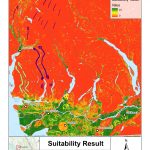
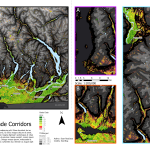
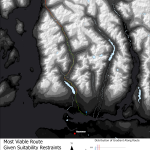

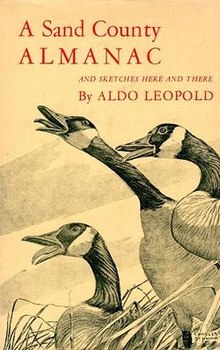
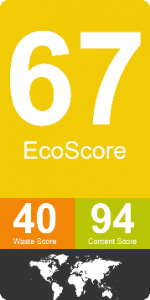 voluntary addition to packaging. Ideally, after implementation, the government will consider mandating the score on products situated in industries with proven high waste, similar to the calorie count of food.
voluntary addition to packaging. Ideally, after implementation, the government will consider mandating the score on products situated in industries with proven high waste, similar to the calorie count of food.